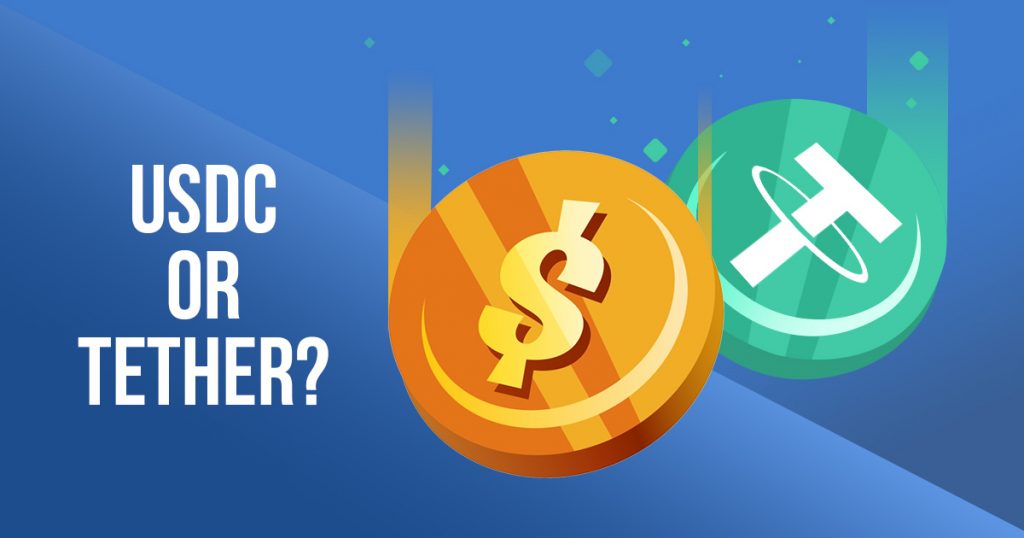Stablecoins play a huge role in crypto by providing stability in a market known for constant price swings. Among the most popular options, USDC and USDT stands out as the two biggest choices for traders and investors. Both are pegged to the US dollar and widely used for transactions, trading, and DeFi applications. While they serve the same purpose, their approach to transparency, regulations, and reserve backing differs, making it important to understand what sets them apart.
What are USDC and USDT?
USDC and USDT are stablecoins designed to maintain a 1:1 value with the US dollar, offering a reliable option for crypto transactions without the volatility of traditional cryptocurrencies. They make it easy to move funds across exchanges, trade assets, and participate in DeFi platforms.
While both serve the same purpose, the difference between USDC and USDT comes down to how they are backed, their level of transparency, and regulatory compliance. Understanding these factors helps investors decide whether to hold USDT or USDC based on their priorities.
Similarities of These Stablecoins
Both USDC and USDT share several key features that make them widely used in the crypto space. Their ability to provide stability and fast transactions makes them essential for traders, businesses, and DeFi users.
Pegged to the US Dollar
Each token is designed to maintain a fixed value of one US dollar. This makes them useful for avoiding crypto volatility while still benefiting from blockchain-based transactions.
High Liquidity and Market Adoption
USDC and USDT are accepted on almost every major exchange, making them some of the most liquid assets in the market. Their high trading volume ensures users can easily buy, sell, or transfer funds without major price fluctuations.
Multi-Blockchain Support
Both stablecoins operate on multiple blockchains, including Ethereum, Tron, and Binance Smart Chain. This flexibility allows users to choose networks based on transaction speed and fees.
Use in DeFi and Crypto Payments
USDC and USDT play a major role in decentralized finance (DeFi), lending platforms, and crypto payments. Their stability makes them ideal for smart contracts, yield farming, and cross-border transactions.
Instant and Low-Cost Transfers
Since they run on blockchain networks, these stablecoins offer fast transactions with lower fees compared to traditional banking systems. This makes them popular for international payments and remittances.
Main Differences Between USDT vs. USDC
Although both stablecoins serve the same purpose, the USDC USDT difference comes down to factors like transparency, regulations, and security. These differences impact how each coin is used and which one might be a better choice for investors and businesses.
Reserve Transparency
USDC is issued by Circle and undergoes regular audits, providing clear reports on its reserves. USDT, managed by Tether, has faced concerns over its reserve disclosures, with less frequent transparency reports. This makes USDC a preferred option for those who prioritize regulatory oversight.
Regulatory Compliance
USDC follows strict compliance standards in the U.S., working closely with financial regulators. USDT, while widely used, operates under more flexible regulations, which can be a concern for users looking for full legal oversight.
Adoption in Trading
USDT dominates trading markets due to its high liquidity and acceptance across crypto exchanges. USDC is also widely available but is often used more in DeFi and institutional transactions.
Supported Blockchains
Both stablecoins run on multiple blockchains, but USDT has broader support across various networks, including Tron, which offers low-cost transactions. USDC primarily focuses on Ethereum and other regulated chains.
Risk Factors
USDT’s history of legal scrutiny and concerns over reserve backing make some investors cautious. USDC, with its strong compliance measures, is seen as a safer choice for long-term holdings.
Making the Right Choice for Your Crypto Strategy
Picking between these stablecoins depends on what matters most—USDT offers higher liquidity and wider adoption for trading, while USDC provides stronger regulatory oversight and transparency. Both have their place in the crypto ecosystem, serving different needs for traders, businesses, and DeFi users. Understanding the difference between USDC and USDT helps in making informed decisions, whether for short-term transactions or long-term holdings.
